The Importance Of A Proper Mattress
By Sam CroSS
Everyone sleeps, and moreover, everyone sleeps a lot. About a third of life is spent asleep, so a proper mattress is paramount to a good night’s sleep.
Bob Zukowski, owner of Custom Sleep Technology Inc (CST), sat down with The Newtown Bee and shared everything about what makes a good mattress, and why getting proper REM and slow-wave sleep is important to living a healthy lifestyle.
Zukowski’s company makes completely custom mattresses designed to fit each customer. He explained that the spine needs to be straight and aligned for proper sleep.
“You level the spine, and that gives you a greater opportunity to experience REM and slow wave sleep … When you’re on a mattress that is not made for your body, it can cause pressure points discomfort, and you move. You move your body to adjust, and you may not come to consciousness, but you come out of a deeper sleep, and you adjust. And the more that your mattress is forcing you to do that, the less opportunity you have to get into that deeper, restorative sleep,” Zukowski explained.
Humans need to sleep. During sleep, the brain and body are doing a lot of silent work that most people do not realize is happening. Slow-wave sleep is the third stage of sleep that lasts about 20-40 minutes. Slow-wave sleep supports memory; it is when the body repairs tissue, supports the immune system, and eliminates waste surrounding the brain, which helps to fend off Alzheimer’s disease. REM sleep, or rapid eye movement

several densities of this latex, which is manufactured here in Connecticut, to choose from. However, not everyone’s densities are the same.
Most married couples share a bed, but the couple will not have the same body type, shape, or sleeping position. Zukowski individualizes each side of the mattress to the person so the couple can sleep in undisturbed harmony. Then, after the body profiles are calculated and the right densities are chosen, Zukowski helps the customers pick out the right kind of pillow.
Custom Sleep Technology, Inc has a few “Design Platforms” at the shop located at 317 South Main Street. Customers can test out the mattresses and try different densities of the Talalay latex before leaving the store.
sleep, is when vivid dreams occur. At this time, the brain also processes memories and helps solidify what was learned throughout the day. Zukowski shared his own personal experience, saying that if he gets a good night’s sleep, he performs better the next day. If he does not get good sleep, he feels more sluggish and his “brain doesn’t work as well.”
Not only did he share his experience, but he used himself as a “guinea pig.” Zukowski tracked his own sleep over a two-week period. He explained for his age, his REM sleep
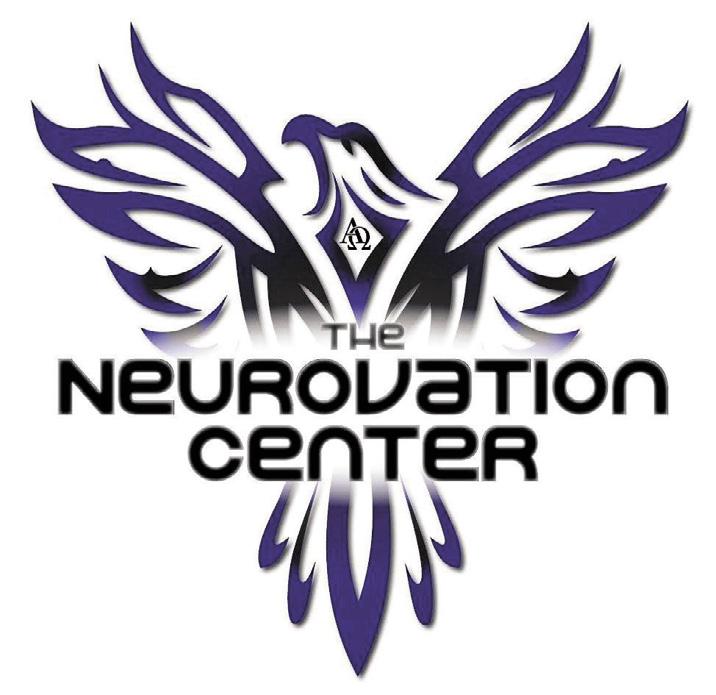
—Bee Photos, Cross
should be between 18-22% of his total sleep a night, and his slow-wave sleep should be around ten percent. After the two-week period, he calculated his running average of both. While his REM sleep was about 21%, his slow-wave sleep was about 20% of his total night of sleep.
How It Works
Zukowski’s customers fill out a body profile online, and, using formulas that are run on AI, the correct densities of Talalay latex are determined for each customer. There are
“When we design the bed, obviously, if we’re allowing your shoulders to sink in, we’re changing the geometry of your head to the mattress. So, where you may have used a firm pillow in the past, now maybe a medium density pillow, or a soft density pillow, is appropriate,” Zukowski said. “We actually give people the right pillow. We send it with the mattress. We’re trying to align the neck and the head with the spine. It’s kind of counterproductive to go through all of this and then have the neck with a kink in it.”
Zukowski assembles every bed he ships out himself, with a very small crew of other workers. He glues each part together by hand and sends them out. Each latex layer is put into an organic cotton cover, and then another organic cotton cover goes over the entire mattress. With these latex beds, there are no rigid parts, so they can be used in adjustable mattress frames as well.
A proper mattress and the right pillow only go so far, however, as there is
( continued on page FBH-6 )
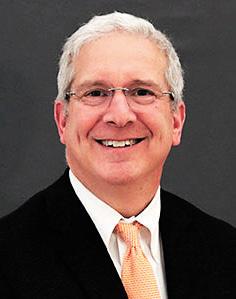


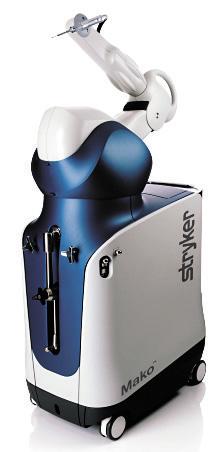







(c) paulaphoto / iStock via Getty Images Plus

“To keep the body in good health is a duty, for otherwise we shall not be able to trim the lamp of wisdom, and keep our mind strong and clear. Water surrounds the lotus flower, but does not wet its petals.” ~Buddha










Why Pregnant Women Should Receive This Very Important Test
(StatePoint) Syphilis is a sexually transmitted infection that can spread to a fetus during pregnancy, or a newborn during labor. When this happens, it is known as congenital syphilis and can result in miscarriage, stillbirth, infant death, or medical issues for the baby, including deafness, blindness, bone deformities, and meningitis.
According to the Centers for Disease Control and Prevention, congenital syphilis has tripled in recent years, with more than 3,800 cases reported nationwide in 2023 alone. This is the highest number reported in one year since 1994.

“While serious, congenital syphilis is preventable through timely screenings before and during pregnancy,” says Margaret Ikeda, MD, MS, FAAP, board-certified pediatrician, Yale University School of Medicine, and member of the American Academy of Pediatrics (AAP) Section on Infectious Diseases.
To help pregnant women protect their babies, AAP is sharing some vital information:
*Steps to Take During Pregnancy: testing and treatment can help protect your baby. AAP recommends all pregnant women be tested for syphilis during early pregnancy and that high-risk pregnant women be tested again during the third trimester and at delivery.





*If you are diagnosed with syphilis, it is important to receive treatment right away. This should be followed by repeat blood tests to make sure the treatment worked. Since you can be infected at any time during pregnancy, your doctor may do the test more than once.
*Steps to Take After Birth: newborn babies can also be tested and treated for congenital syphilis. As soon as infection is detected, babies should be treated with antibiotics. After the first treatment, babies will have repeated blood tests over several months to make sure the infection is gone, and, occasionally, will need to be treated again.
*Signs and Symptoms to be Aware of: the first stage of acquired syphilis can appear as a painless sore on the genitals a few weeks after exposure, however it often goes unnoticed. Unless treated, the infection can spread throughout the body. Symptoms at this stage can include skin rash, swollen glands, fever, headache, joint aches and fatigue, and can last for months or even come back later if not treated. However, it’s important to understand that you can be infected with syphilis but not feel sick or have any symptoms at all, which is still dangerous for the baby. That’s one reason why testing is so important.
*Resources to Lean on: AAP offers comprehensive resources to help ensure pregnant women get needed testing and treatment for themselves and their newborns. Visit aap.org/congenitalsyphillis to learn more.
“The best thing you can do to protect your baby is to have syphilis blood testing as soon as you discover you are pregnant and throughout pregnancy. If you are diagnosed with the infection, get treatment as soon as possible,” says Yarlini Vipulanandan, MD, pediatric infectious disease fellow at University of Alabama in Birmingham and post-residency training member of AAP.

Unresolved Respiratory Symptoms? Get the Right Tests and Care
(StatePoint) Each year, 500 to 1,000 people in the United States are diagnosed with pulmonary arterial hypertension (PAH), a rare lung disease that can be fatal if left untreated.
To encourage earlier diagnosis of PAH, American Lung Association, with support from Johnson & Johnson, is sharing information about the disease, its symptoms, and the importance of testing and proper treatment. Here’s what the Lung Association wants everyone to know:
*What is PAH? PAH is a rare, progressive lung disease caused when the tiny arteries in the lungs become thickened and narrowed. This blocks blood flow through the lungs, causing the blood pressure in the lungs to rise. The heart has to work harder to pump blood through the narrowed arteries. Over time, the heart has difficulty effectively pumping blood through the body.
*What are the symptoms of PAH? In the early stages, someone may not notice symptoms. As PAH progresses, common symptoms include shortness of breath, especially with activities like walking up the stairs or long distances, fatigue, edema (swelling of the feet, legs and eventually the abdomen and neck), dizziness and fainting spells, chest pain, heart palpitations, and lips and fingers turning blue. People experiencing these or any worrisome symptoms should contact their healthcare provider.
*Who is most at risk? While anyone can get PAH, those most at risk are women ages 30-60, and Black and Hispanic women.
*Why is PAH difficult to diagnose? Because symptoms of PAH are similar to other diseases, the average time it takes to get a diagnosis is about three years. This delay can be frustrating for patients and their families, and can result in poorer health outcomes. Unfortunately, health disparities exist due to a wide range of factors, like lack of access to healthcare, health insurance coverage, transportation to specialists, and health literacy, and can exacerbate these delays. Increasing awareness of this rare disease can help patients get a quicker diagnosis so they can get the treatment they need.
Elva V., a mom and nurse, has been living with PAH since she was 23. She shared that getting the correct diagnosis and treatment plan has been a “game changer,” helping her “feel well enough to do the things I enjoy and live a good life with my daughters.”
How can the path to diagnosis be shortened? A healthcare provider may order several tests to help with diagnosis:
*A simple blood test, the BNP test (also called B-type natriuretic peptide test) or NT-proBNP test, can help determine if the heart is working harder than it should, a sign that someone may have PAH. Getting this test done early can help speed the path to diagnosis.
*Electrocardiogram to show the electrical activity of the heart.
*Echocardiogram to check the size and condition of the heart.
*Lung function tests.
*A right heart catheterization to confirm PAH, once the provider suspects it. How is PAH treated?
PAH-specific medications come in multiple forms: oral, inhaled and subcutaneous. Some allow blood to flow more easily through the arteries of the lungs. Others improve heart and lung function. PAH medications help slow how quickly the disease worsens. For optimal health outcomes when dealing with a rare disease like PAH, it’s best to see a specialist.
“When seen by a specialist, you’ll receive the latest treatment and resources to help you live your best life,” says Dr Michael Cuttica, a pulmonary hypertension specialist. That is certainly the case for Lindsay T., who has been liv-
ing with PAH since her early twenties and works with her doctor to manage her care.
“My BNP has been within a normal range since I alerted my specialist that my symptoms were getting worse and he adjusted my medications,” she said. If someone has unresolved respiratory symptoms that are not improving with their current treatment, they can learn more about PAH at Lung.org/pah. A PAH diagnosis doesn’t have to be delayed. With the right tests and care from a specialist, people can get on the path to the treatment they need.

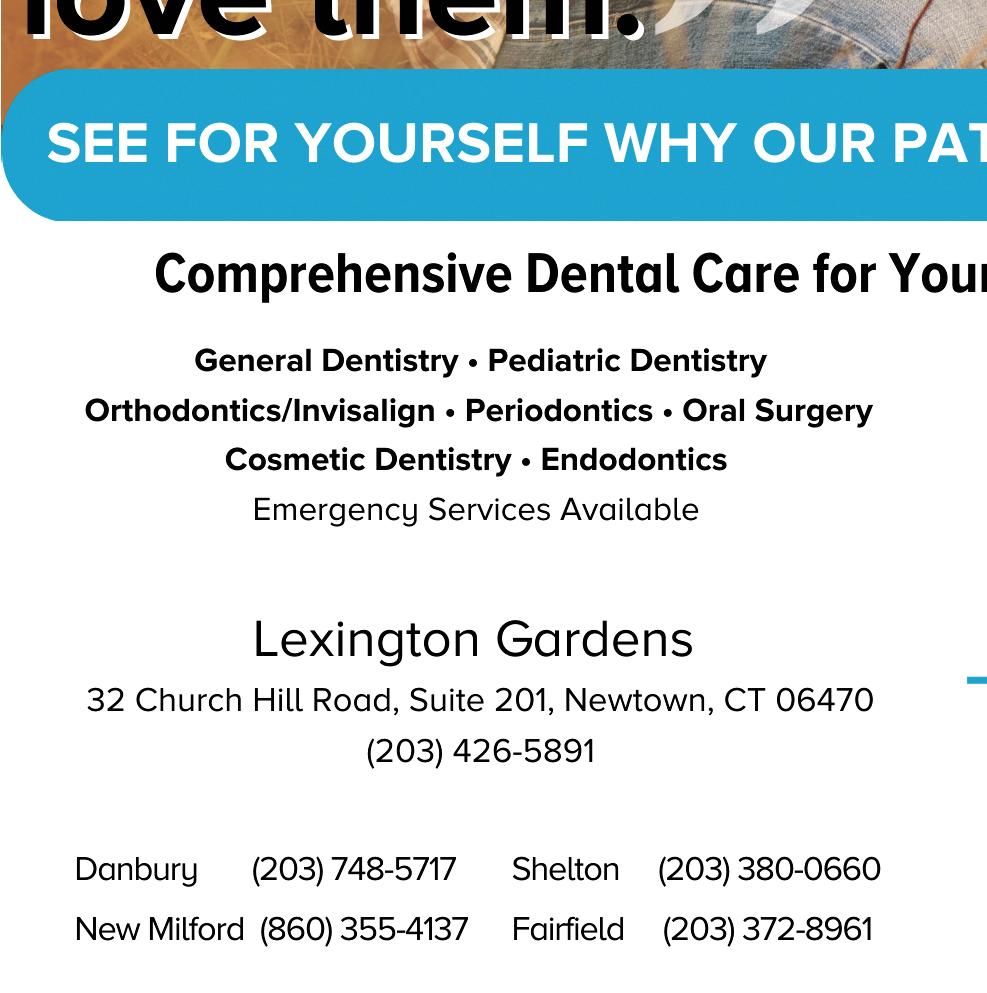


Caregivers Face Financial, Emotional and Career Impacts, Study Finds
(StatePoint) Two in five US adults identify as family caregivers, but there is a lack of support for them nationwide, according to new research from Edward Jones in partnership with Morning Consult and Age Wave. With 46% of Americans expected to become caregivers in the future, this research sought to better understand their concerns and challenges, and uncover ways to support them.
How caregivers are navigating their finances, emotions and careers
Top financial concerns caregivers face include rising costs and inflation (56%) and inadequate retirement savings (42%).
In fact, 95% of caregivers have some level of financial concern for their retirement, and 51% must cut back on personal spending because of their caregiving responsibilities, according to the study. In addition to financial challenges, many caregivers cited caregiving as a sig-
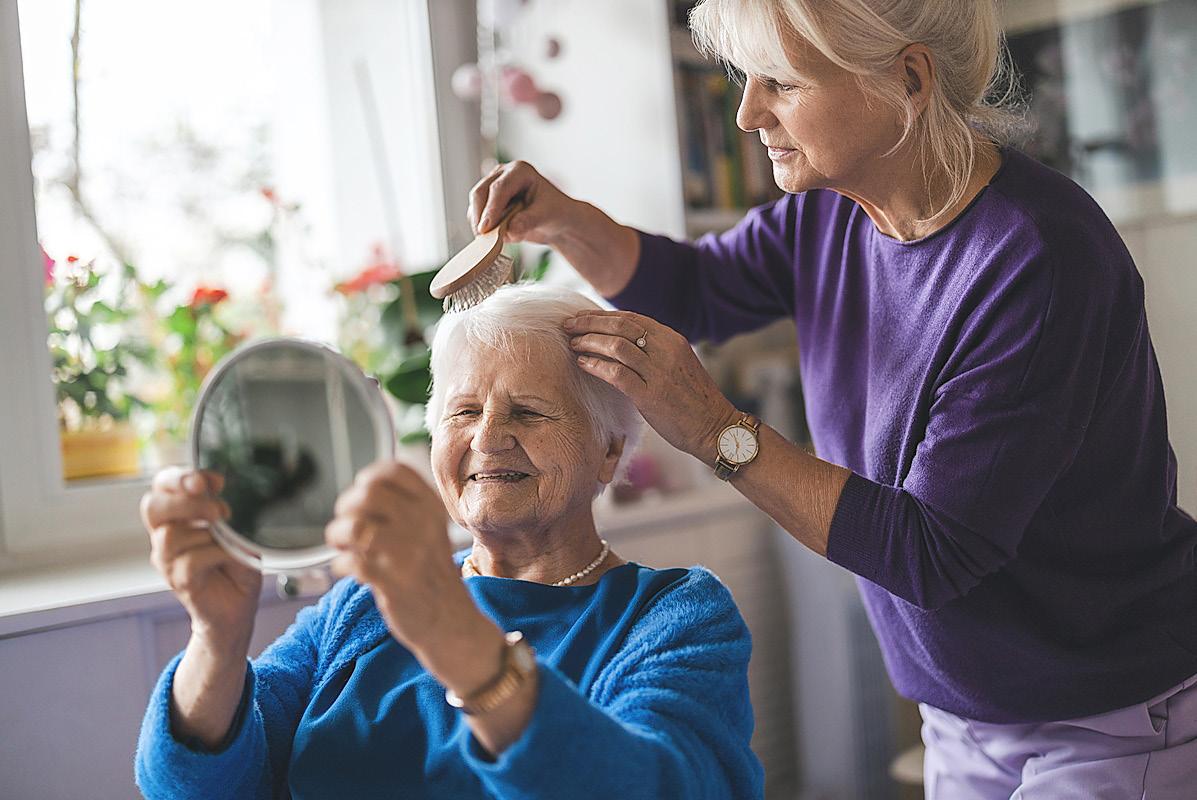
nificant emotional responsibility, leaving them stressed, burned out, and unable to prioritize their own health.
Most caregivers (72%) are willing to sacrifice their own financial security to ensure proper care for their loved ones. This
sometimes includes such measures as stepping away from their jobs entirely, reducing work hours, taking on debt and dipping into their own retirement savings.
Despite these challenges, 80% of caregivers say their role has strengthened their relationships with loved ones, with the large majority reporting feelings of personal fulfillment and gratitude from those in their care.
“Caregivers often bear great financial burdens and sacrifice their own well-being to care for children and elder family members,” says Ken Dychtwald, founder and CEO of Age Wave. “The vital role of family caregivers in our care systems and society
demands greater recognition, resources, and relief, especially as America’s population continues to live longer with more chronic conditions and the need for caregiving grows.”
Support, education, and resources for caregivers are crucial. 57% have not sought professional advice for caregiving-related financial guidance, yet 93% of those who work with a financial advisor report feeling more confident about their financial future.
“Financial advisors are an important element of a caregiver’s support system,” says Ken Cella, principal and head of external affairs at Edward Jones. “They can give caregivers a complete picture of their
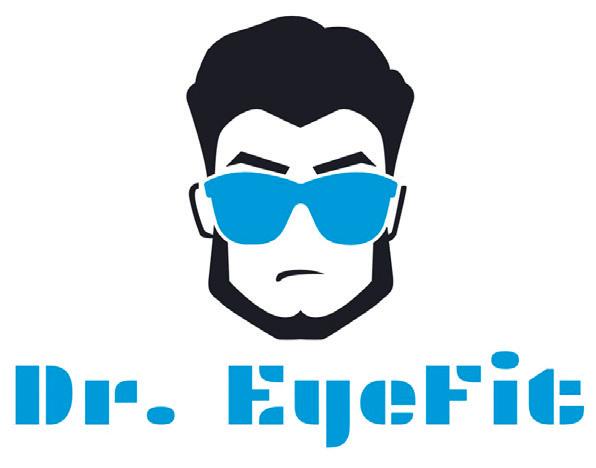
Koyfman Board Certified Doctor of Optometry
Ocular Disease Residency Trained Optometrist 25 Church Hill Road Newtown 203-426-5586 dr.eyefit.nt@gmail.com
finances, enabling them to navigate the complex realities of care while planning for multiple long-term financial and life goals.”
Policies that help caregivers have bipartisan support
Currently, 68% of Americans, regardless of political affiliation, say the public sector is not doing enough to support caregivers, a sentiment felt more strongly among those caring for elderly adults and special-needs adults. The research found that the majority of Americans support enacting federal legislation that would aid caregivers, such as expanded retirement account contributions for caregivers, and additional “catch-up” contributions for caregivers.
Additionally, 74% say they believe employers should offer benefits such as financial support or flexible work arrangements for employees with caregiving responsibilities, reflecting a growing demand for supportive workplace policies.
“In the face of rising living costs and a looming retirement crisis, supporting caregivers through national and employment policies is an investment in economic stability, public health and the well-being of both caregivers and those they are caring for,” says Cella. “As a firm, we are proud to advocate on behalf of caregivers by backing policies that will build lasting financial strength for our clients, colleagues, communities and society.”
Edward Jones supports the Improving Retirement Security for Family Caregivers Act and the Catching Up Family Caregivers Act. According to advocates, these bills would build on the success of the SECURE 2.0 Act by providing additional savings opportunities for caregivers. To learn more, visit edwardjones.com/caregiving.
Caregivers have a lot to navigate emotionally, financially and logistically. But support, education, and resources can help them meet the challenges.
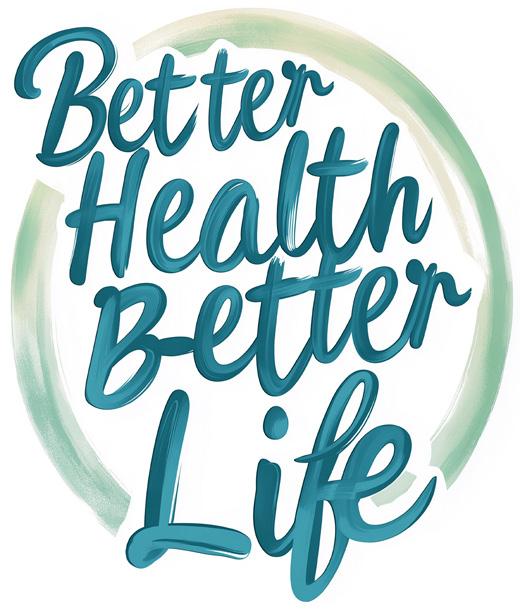
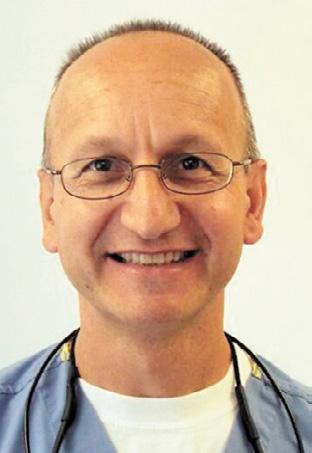


























The Importance Of A Proper Mattress
( continued from page FBH-1 )
a third component to restful sleep.
Sleep Hygiene — What Is It And Why Is It Important?
“Every morning, we get up, typically at the same time. We brush our teeth. We take a shower, go to work. We’re in a routine,” Zukowski started. “Sleep is the same way. You need to have a sleep routine because your body and your brain remember. It remembers when you should be going to bed, when you should be waking up.”
Sleep hygiene refers to the idea of,
like Zukowski said, a sleep routine and schedule. Some ways to practice this are going to sleep and waking up around the same time every day, including weekends; not being on devices like tablets, phones, or laptops while being in bed; and not eating, or consuming alcohol or caffeine, a certain amount of time before going to bed.
Zukowski added that the room should be cool, very dark, and relatively noise free for the optimal sleeping experience. Blue light, which is the kind of light emitted from devices, is similar to sunlight to human eyes. An hour before the sun even starts to set, the body starts natural-
ly producing melatonin to help get to sleep. As people are exposed to more blue light, that melatonin wears off.
“Linens are also a key component to this,” Zukowski said. He said a lot of people complain about sleeping hot. He recommends low thread count cotton sheets for those who find themselves warm during the night. Zukowski interlaced his fingers tightly to demonstrate his point, saying that with tightly knitted sheets, there is less room for the body heat to dispel throughout the rest of the mattress. He loosened his fingers, which then had spaces between them. Lower thread count sheets are looser, which allows body heat to
disperse across the rest of the surface.
“It’s so important to [get good sleep],” Zukowski stated. “I think of it as investing in your health when you buy a quality mattress.” There are three components to a healthy lifestyle according to Zukowski: eating healthy, exercising, and getting good sleep.
For those interested in learning more about Custom Sleep Technology Inc, visit customsleeptech.com, call 203-258-1308, email info@customsleeptech.com, or stop by the store located at 317 South Main Street. Reporter Sam Cross can be reached at sam@thebee.com.
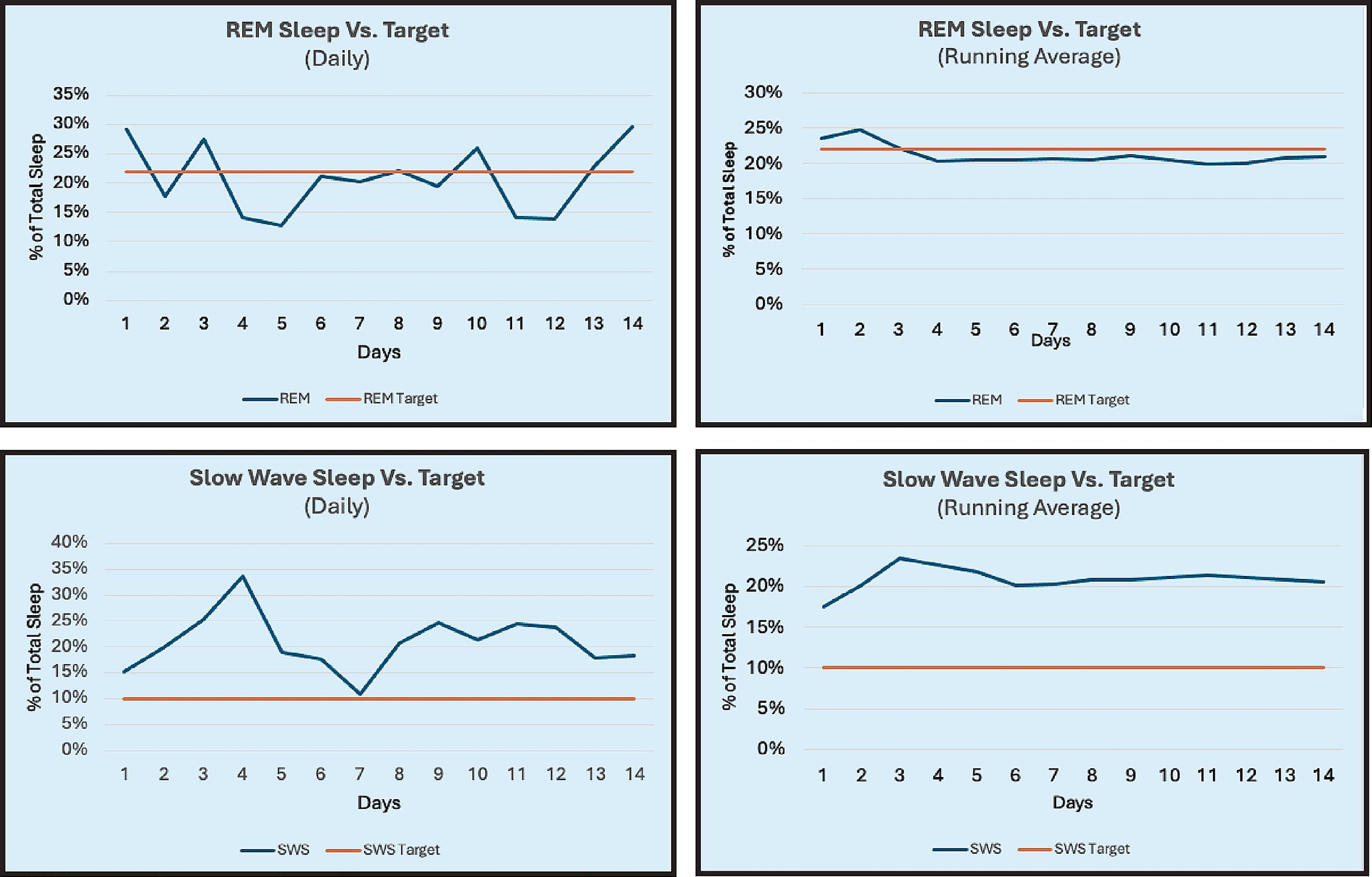
Alzheimer’s Disease: Separating Fact
From Fiction
Millions of people are living with Alzheimer’s disease, a progressive, irreversible brain disorder that causes cognitive decline, confusion, memory loss, and many other symptoms. The Alzheimer’s Association says one in three seniors dies with Alzheimer’s or another dementia.
Learning to recognize facts from fiction regarding Alzheimer’s disease can help families navigate a diagnosis more effectively. These facts are courtesy of the Alzheimer’s Society.
MYTH: Alzheimer’s disease only affects older people.
FACT: Although age is the most significant risk factor for Alzheimer’s, young-onset Alzheimer’s disease can occur in people from their 30s to mid60s.
MYTH: Alzheimer’s is a natural course of aging.
FACT: It is important to understand that Alzheimer’s disease is not a normal part of aging. It is a distinct progressive illness that goes beyond the minor memory loss that occurs when one gets older.
MYTH: Alzheimer’s disease and dementia are the same thing.
FACT: Alzheimer’s disease is one form of dementia. Diseases other than Alzheimer’s disease also fall under the dementia umbrella, including vascular dementia, frontotemporal dementia and Lewy body dementia.
MYTH: Having a family member with Alzheimer’s disease means I will definitely inherit it.
FACT: Although there are genetic components for early-onset and late-onset Alzheimer’s disease, even the presence of genetic mutations does not mean that a person will definitely develop the disease.
MYTH: There is a cure for Alzheimer’s disease.
FACT: There are medications and other approaches that can often help with some of the symptoms of Alzheimer’s, but at present there is no cure.
MYTH: Alzheimer’s can be prevented by diet or vitamins.
FACT: A healthy diet and lifestyle can help slow cognitive decline and may reduce Alzheimer’s risk, but no single factor can fully prevent Alzheimer’s disease.
MYTH: Alzheimer’s disease is only marked by memory loss.
FACT: Confusion, difficulty with language and communication, problems with planning and decision-making, and changes in mood and behavior are each considered symptoms of Alzheimer’s disease.
Knowledge of Alzheimer’s disease can make it easier for individuals and their families to navigate life after a diagnosis.


• Diagnostic hearing evaluations
• Hearing aids, repairs, service and accessories
• Custom earmold products
• Assistive listening devices
• Participating with most health insurances
Accepting new patients 18 years and older Office Hours by Appointment 203-304-9744 annehear711@gmail.com
CT 06482



At Benchmark, we’ve dedicated over 28 years to becoming one of the Northeast’s leading senior living providers. While personalized care, engaging programs, restaurant-style dining and outstanding amenities set us apart, it’s powerful relationships that define the Benchmark Experience. Benchmark is proud to expand our services with Benchmark at Newtown, formerly Church Hill Village. Now, more seniors and their families in Fairfield County can enjoy the exceptional experiences found at our other 20 Connecticut locations.
Celebrating Helping People Stay Healthy & Strong
JFS specializes in Personal Fitness Training for adults provided individually or in small group classes, offering

Three Things Every Older Adult Should Do for Their Health This Fall
(StatePoint) For older adults, fall is an important time to focus on health and wellness.
According to Ryan Kocher, who leads Medicare


growth for HealthSpring, the new brand for Health Care Service Corporation’s Medicare business, formerly owned by Cigna Group, the following three tasks are essential for seniors to complete as cool weather sets in.
Get a Flu Shot
An influenza vaccine can help prevent serious illness due to flu. As immune defense diminishes with age, older adults are increasingly susceptible to flu complications. The Centers for Disease Control and Prevention (CDC) recommend the use of higher dose flu vaccines for people 65 years and older. This fall, in advance of flu season, visit your healthcare provider or pharmacist to get the right vaccine for you. This is also a good time to catch up on any other immunizations that a provider recommends.
Review
Medicare Coverage


















Medicare is the government health insurance program for Americans 65 and older and others who qualify. Many Medicare beneficiaries choose or change their plans during the Medicare Annual Enrollment Period (AEP), which takes place between October 15 and December 7. HealthSpring is offering a host of Medicare options for 2026. The company provides these tips for selecting a plan:
*Check for plan changes: Review your plan every AEP, especially if you’ve experienced changes to your health, lifestyle or finances. It’s especially important to read your Annual Notice of Change (ANOC) letter — delivered every September — to find
out about any modifications to your current plan.
*Dig into the details: A good plan is one that includes your favorite providers and specialists and covers the medications you currently take. When reviewing plans, take these factors into consideration.
*Consider all your options: Medicare Advantage plans cover everything Original Medicare does, so do your research to see if these plans will work for you.
*Learn more: Before enrolling in a particular plan, be sure you understand the details. Call Medicare at 1-800-MEDICARE (1-800-633-4227) 24 hours a day, seven days a week; TTY users can call 1-877-486-2048. Or, visit the Medicare Plan Finder website at Medicare.gov/ plan-compare. For local assistance, refer to the State Health Insurance Assistance Program website at shiptacenter.org. You can also visit individual Medicare plans’ websites for more information. For example, HealthSpring’s website is healthspring.com.
Use Your Health Care Benefits
Annual enrollment also serves as a good reminder to take advantage of all your Medicare benefits. Preventive care and a healthy lifestyle can help you maintain your independence and vitality as you age. Tap into what your plan offers so you can actively engage in your health and well-being. By checking a few important items off your to-do list during autumn, you can ensure you’re well-positioned for a healthy winter and 2026.
How Hidden Plastic In Your Daily Life Is Harming Your Health
(StatePoint) Plastics are no longer just an environmental issue — they are a direct threat to human health. Found in homes, workplaces, and schools, scientists are increasingly finding plastics inside our bodies. Microplastics and toxic chemicals have been detected in human blood, feces, lungs, breast milk, placentas, stomachs and even brains — and babies are exposed before they are even born. Nanoplastics are particularly concerning because they are small enough to enter individual cells and tissues, raising red flags about long-term health effects.
With the Plastic House Challenge, Greenpeace USA asks participants a series of questions about items in three rooms of their homes — kitchens, bathrooms and bedrooms — to identify hidden sources of plastic exposure in their daily life. The survey aims to raise awareness about the risks of plastic pollution while empowering consumers to demand accountability and action from corporations and government.
What the Science Shows Plastics are made with over 16,000 chemicals, at least 26% of which are highly hazardous to human and environmental health. Many remain untested, and each major type of plastic can contain more than 400 chemicals of concern. Advocates say that contrary to popular belief, recycling is not a safe solution to the problem of excessive production, as less than five percent is recycled, and the process can actually increase concentrations of toxic chemicals.
Health Impacts
Plastics release or contain substances linked to hormone disruption (endocrine disorders), cancers, reproductive issues (infertility, premature birth, early puberty), neurological disorders and learning disabilities, immune dysfunction and chronic inflammation, obesity, diabetes and metabolic disease, respiratory diseases, cardiovascular problems, and digestion

disorders. While all people are exposed, communities living near petrochemical and plastic production facilities — often low-income and marginalized — bear a disproportionate burden. Numerous studies show that residents of these “fenceline” communities face higher rates of premature birth, low birth weight, childhood cancers, respiratory and heart disease, mental health disorders and other chronic illnesses.
Pathways of Exposure
Humans encounter plastic chemicals and particles daily through three main routes: *Ingestion. Packaging leaches chemicals into food and beverages. Over 12,200 chemicals are used in food-contact materials; at least 600 are toxic, while another 3,500 lack public toxicity data. Migration of chemicals into food is so common that US law defines them as “indirect food additives.” Microplastics also absorb other environmental toxins — such as heavy metals, polychlorinated biphenyls and pesticides from the environment — which people ingest along with the plastic particles themselves.
*Inhalation. Microplastics are released into household air from carpets, clothing, bedding, toys, packaging films, and dust. Indoor air can contain 60 times more microplastics than outdoor air and people spend up to
90% of their lives indoors. Families are estimated to inhale 2,000–7,000 microplastics daily, and a person may inhale the equivalent of the Eiffel Tower in plastic over a lifetime.
*Skin absorption. Personal

care products, cosmetics and fragrances often contain or are packaged in plastics with hazardous chemicals such as phthalates, PFAS and parabens. These are absorbed directly through the skin.
Regulatory Gaps
Despite the scale of human exposure, Greenpeace USA policy analysts say that transparency is lacking; 25% of plastic chemicals lack public identity data, 50% lack information on their function, 56% lack data on their presence in plastics, and 66% lack hazard information. With just six percent of plastic chemicals regulated internationally and US food packaging regulations covering only a fraction of chemicals in use, the public is left largely unprotected. Learn more about the Plastic House Challenge by visiting greenpeace.org/usa/plastic-house-challenge. Protecting ecosystems and human health from plastic goes beyond personal choices. According to advocates, it will require a global effort to reduce plastic production at the source, eliminate toxic plastic chemicals, and expand safer, reusable alternatives.

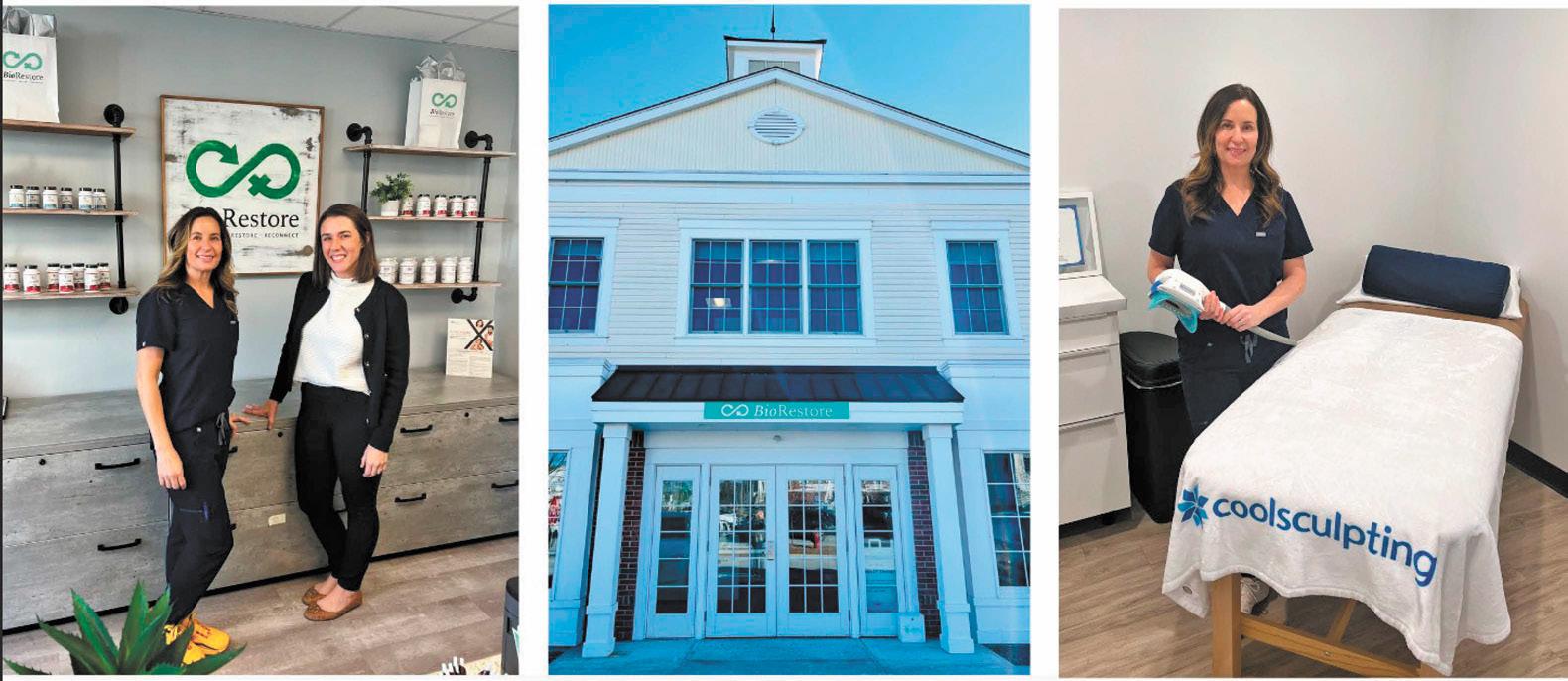


The Benefits of Self-Care And Taking A Spa Day
By Jenna ViSCa
With the hustle and bustle of everyday life, it can be easy for someone to neglect taking care of themselves. People carry tension in their bodies for a variety of reasons, whether it be from repetitive physical labor or excessive psychological stress.
Prolonged exposure to physical or emotional stress can cause someone to experience health issues such as headaches, sleep problems, and high blood pressure. This is why recognizing and managing stress is important when it comes to reducing tension in the body.
One of the many ways people can combat stress is by treating themselves to a spa day. For some, finding time in a busy schedule for self-care might be difficult. Nevertheless, taking a moment to seek out spa services, from massages to facials, can greatly improve someone’s mood and daily function.
Humans are well-equipped to handle stress in small doses, according to an article from American Psychological Association (APA).
It creates a rush of adrenaline and cortisol, the latter of which regulates metabolism, limits inflammation, and regulates blood pressure. People might start to feel their heart beat faster, their breathing quicken, or muscles tense up.
Harvard Health Publishing reports that this “fight or flight” response helps people react to immediate danger such as an oncoming car.
While sudden onset stress causes the body’s muscles to tense up, they release that tension once the stressor is gone.
However, stress starts to be an issue when it becomes long-term or chronic. APA states that chronic stress causes the muscles in the body to be in a “more or less constant state of guardedness.”
As such, stress affects all systems of the body, including the musculoskeletal, respiratory, cardiovascular, endocrine, gastrointestinal, nervous, and reproductive systems.
APA notes that migraines and tension headaches are associated with chronic muscle tension around the shoulders, neck, and head.
It also states that prolonged stress can: increase the risk for hypertension, heart attack, or stroke; potentially affect brain-gut communication and trigger pain and bloating; impact sexual desire and reproduction in men; impact menstruation and sexual desire in women; and much more.
An article from American Heart Association states that simple activities, such as sleep, meditation, or socialization, can help kick-start the body’s relaxation response.
Taking A Spa Day
Spas, commercial establishments offering health and beauty treatments, are just one of several ways people can de-stress and release tension from their bodies.
Massages are a staple offering of spas. Not only are massages used as a tool for stress reduction and pain relief, they are also used to improve circulation, improve flexibility, and lower joint inflammation, according to an article from Mayo Clinic.
It is because of these physical and mental benefits that the article states massages are increasingly offered to help with various medical conditions, in addition to standard treatment. Some conditions massages can help with include: anxiety, depression, nerve pain, insomnia, fibromyalgia, postoperative care, sports injuries, and temporomandibular (TMJ) disorders.

One of the many ways people can de-stress is by treating themselves to a spa day. A guest at Newtown MediSpa can be seen getting a HeadSpa, a scalp and hair treatment that relieves stress, improves circulation, and relaxes the mind and body.
—photos courtesy Newtown MediSpa
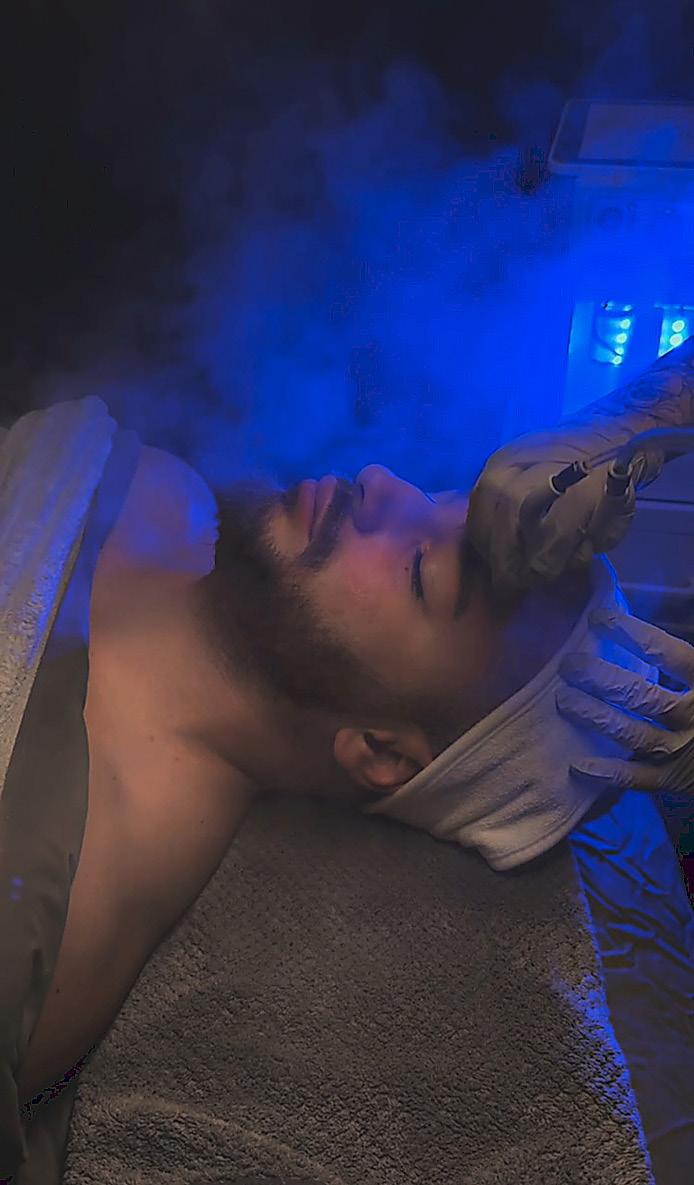
Newtown MediSpa’s DiamondGlow treatment uses a diamond-tipped wand to carefully exfoliate the skin, extract impurities from pores, and infuse tailored serums deep into the skin.
Spas can offer a variety of other services that help elevate someone’s mental and physical well-being. The local Newtown MediSpa integrates traditional allopathic medicine with a homeopathic approach, offering a comprehensive and more natural path to aging and treating age-related conditions.
It specifically focuses on aesthetic medicine, body contouring, skin care, and weight loss in addition to spa services.
One of the spa’s offerings is the HeadSpa, a scalp and hair treatment that rejuvenates the scalp through exfoliation along with water therapy and touch therapy.
Deep cleansing helps remove buildup and excess oil from the scalp, while touch therapy enhances blood flow to the scalp and supports healthier hair growth. The water therapy component helps hydrate and nourish the scalp, which creates the ideal environment for shinier, stronger hair.
It can be easy for people to feel self conscious of their skin. People can seek out treatments such as chemical peels to tackle dead and damaged skin and address acne and sun damage.
Newtown MediSpa offers DiamondGlow, a skin-resurfacing treatment that uses a diamond-tipped wand to carefully exfoliate the skin, extract impurities from pores, and infuse tailored serums deep into the skin. It is also fully customizable to address unique skin concerns.
Debra Sullivan, PA-C, owner of Newtown MediSpa, is as passionate as the rest of her team when it comes to helping others feel more comfortable in their own skin.
“Education is central to our philosophy,” Sullivan said. “We ensure our patients are informed by the latest medical research and receive care that promotes longevity and overall health.”
To that end, the medical spa has two Allergan Medical Institute educators, a Master’s-level nurse and university professor, a Harvard-trained Lifestyle and Nutrition RN, and a team of mid-level providers with over 20 years of average patient care experience.
Sullivan and her team, in their mission to help people from the community and beyond, believe in taking a complete and well-rounded approach. They work with patients to create a comprehensive health and wellness plan suited to their needs.
Sullivan said they are taking that passion one step further with their new on-site training center. Newtown MediSpa is training physicians, mid-level providers, and RNs in aesthetic medicine procedures, practice management, and treatments for peri-menopause, menopause, and andropause (low testosterone).
In addition to advanced medical services and other offerings such as its peri-menopause and menopause consultation, Newtown MediSpa has a private pampering relaxation room designed to encourage mindfulness and meditation.
As Sullivan said, “It’s all about staying healthy and feeling your best for years to come.”
She continued, “We believe that true wellness encompasses both body and mind, and every patient who visits us deserves a space that promotes healing, comfort, and tranquility.”
To learn more about Newtown MediSpa, visit newtownmedispa.com, call 203-304-9725, or follow its Instagram @newtownmedispa or Facebook @ Newtown MediSpa.
Reporter Jenna Visca can be reached at jenna@ thebee.com.

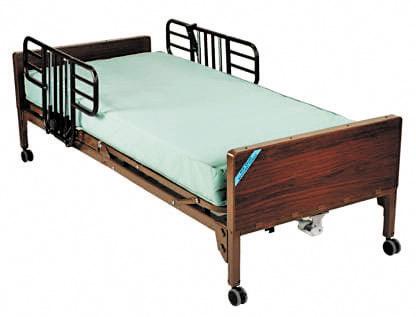





















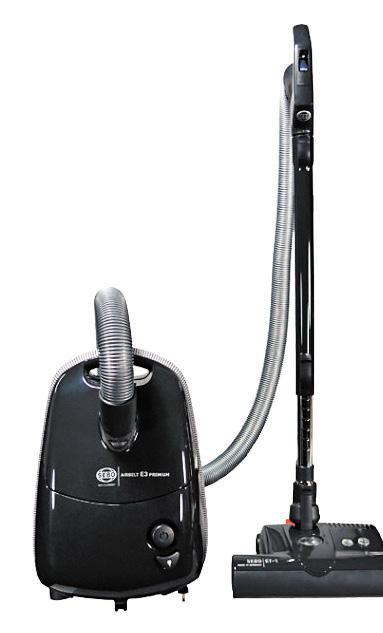

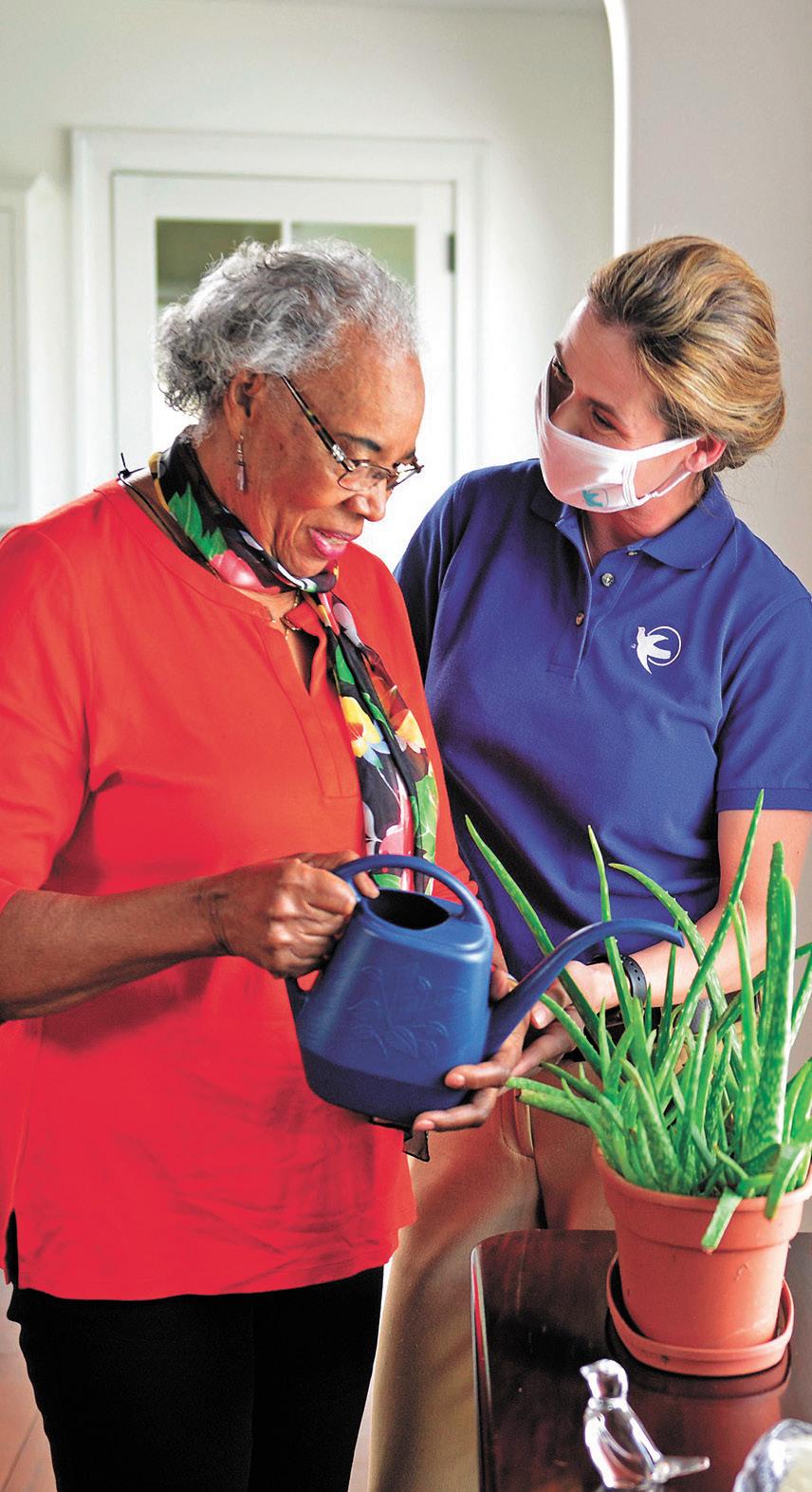


Community Water Fluoridation is a Popular and Proven Dental Health Benefit
(StatePoint) In a May 2025 national poll by Consumer Healthcare Products Association in cooperation with American Dental Association (ADA), more than four out of five survey takers said they are familiar with fluoride’s role in oral health and that fluoride is particularly important for children, while more than two out of three said they are comfortable with fluoride in their tap water.
Fluoride, a mineral that naturally occurs in water sources such as rivers, lakes and oceans, helps prevent tooth decay by making the surface of teeth stronger and more cavity-resistant. It’s often the active ingredient in cavity-fighting toothpastes. Adding fluoride to tap water is like adding vitamins and minerals to foods and drinks, helping people access important nutrients for their oral and overall health. So why has it become such a focus of conversation lately?
Misleading data from countries with fluoride levels that can reach 30 times the amount in US public water systems has created a flurry of misinformation, yet still, this survey shows that people know and trust in fluoride’s power to help prevent tooth decay at optimal levels. If community water fluoridation is being debated in your hometown, here’s what America’s dentists want you to know.
Fluoride in water saves both pain and money. Cavities are the most common chronic childhood disease,
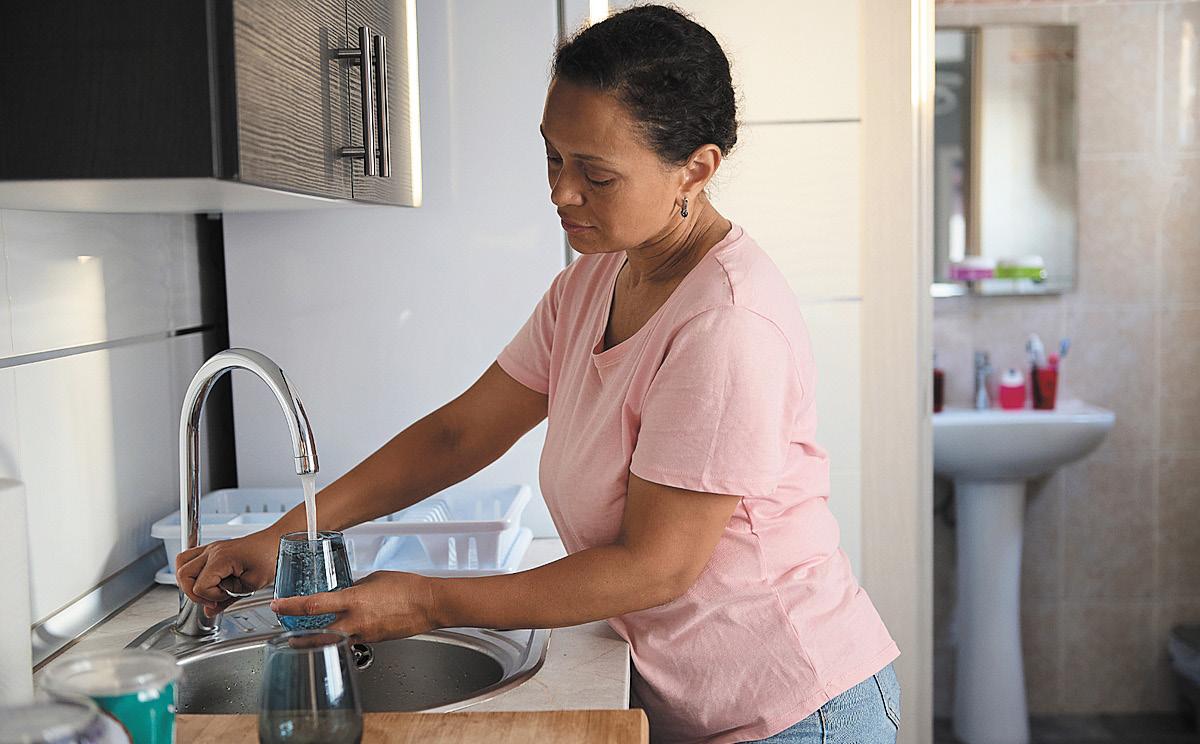
and community water fluoridation is proven to do two important things: reduce tooth decay by 25% in children and adults, and reduce the costs and complications of severe cavities. The ADA Health Policy Institute estimates removing fluoride from all US community water systems would cost $46 billion over five years because of increased dental care costs.
Estimates aside, present-day proof exists. When Calgary, Alberta; Windsor, Ontario; and Juneau, Alaska stopped adding fluoride to their water, dental disease and its associated costs rose in children and adults. Five years
after the ban in Windsor was implemented, a dental health report found that the rate of children with tooth decay and/or requiring urgent care for untreated dental health issues increased by 51%. Windsor and Calgary have since resumed community water fluoridation.
Bans don’t help fight dental disease. Community water fluoridation is simply the adjustment of naturally occurring fluoride in drinking water to an optimal level to prevent tooth decay. Almost all US water sources naturally contain fluoride, but often not enough to be effective in preventing cavities.

When a state bans fluoridation — as Utah and Florida did recently — communities that were adding fluoride to their water lose access to a proven dental health benefit, while others lose the opportunity to start. While someone who lives in an area with fluoridated public water can easily access water without fluoride if they choose — through purified bottled water or at-home water filtration — someone who wants fluoridated water where it’s been banned has had their choice taken away without valid alternatives offered. This is especially harmful to rural and low-income communities and those who lack regular access to dental care.
“Fluoridated water is a simple, inexpensive way to strengthen teeth and prevent cavities,” said ADA dentist, Scott L. Tomar, DMD, DrPH. “Take away that access, and we know the risk for cavities increases.”
The bottom line is that fluoride is popular and good for dental health. For more information about fluoride in water, visit MouthHealthy.org/fluoridation and ADA.org/fluoride.
“The freedom to access optimally fluoridated public water and receive its dental health benefits should not be denied because of misinformed policy decisions that ignore community needs and majority support for fluoride,” said Tomar. “Community water fluoridation is the popular and proven choice.”






